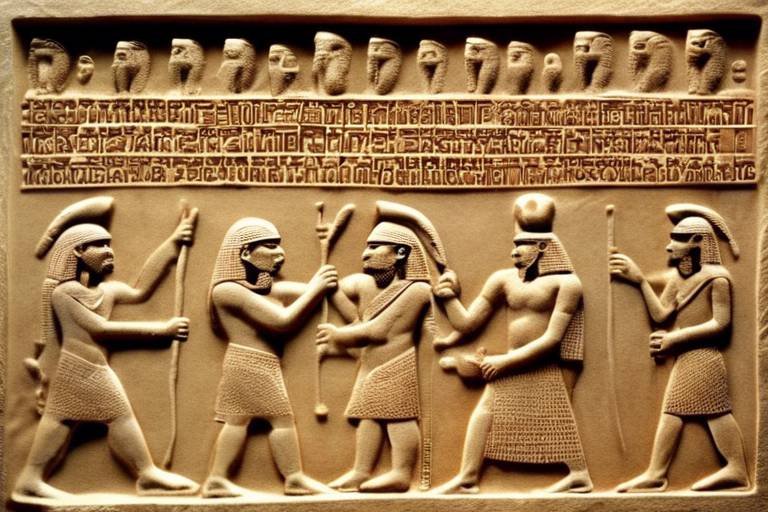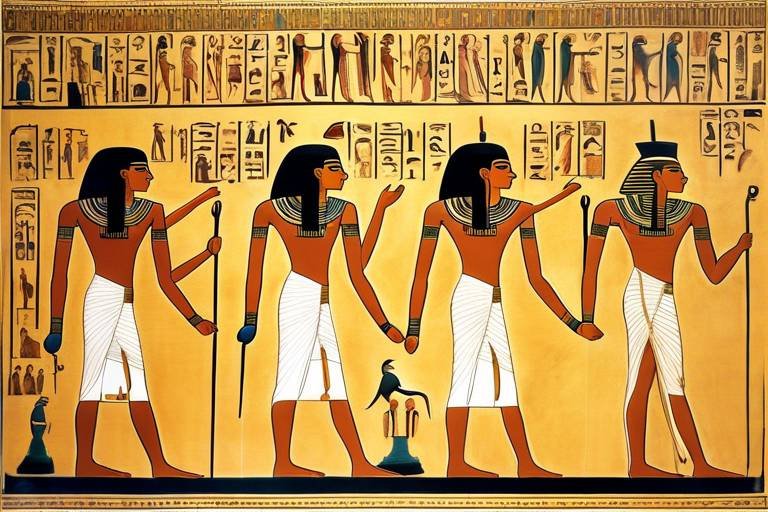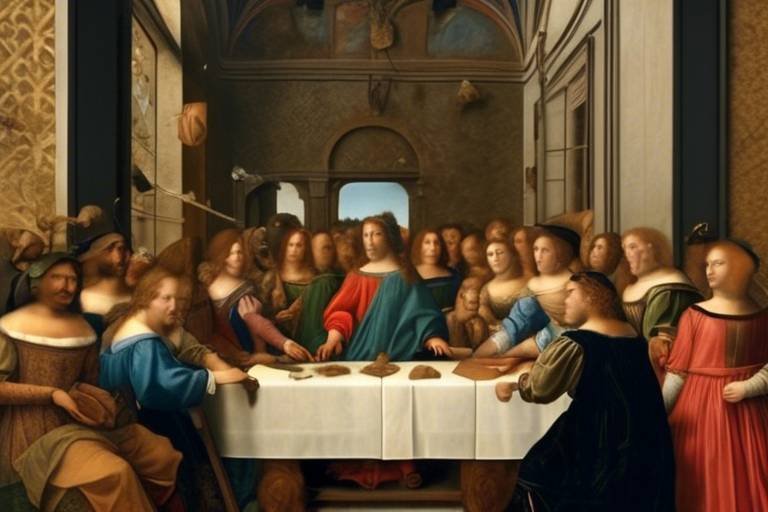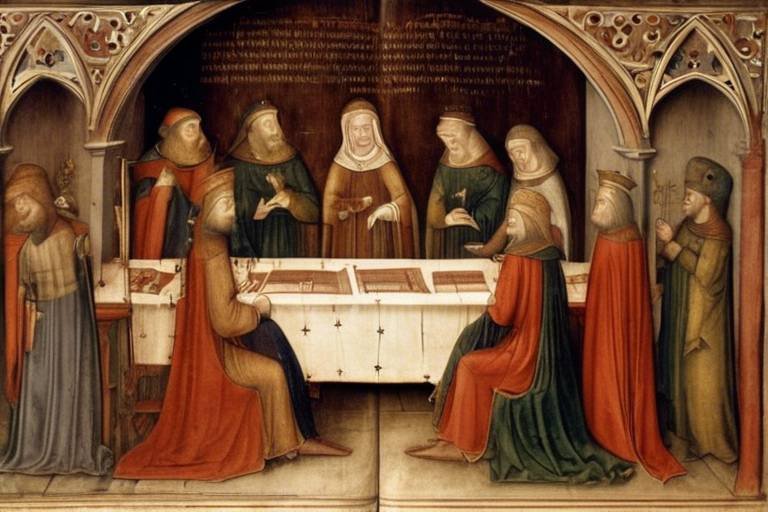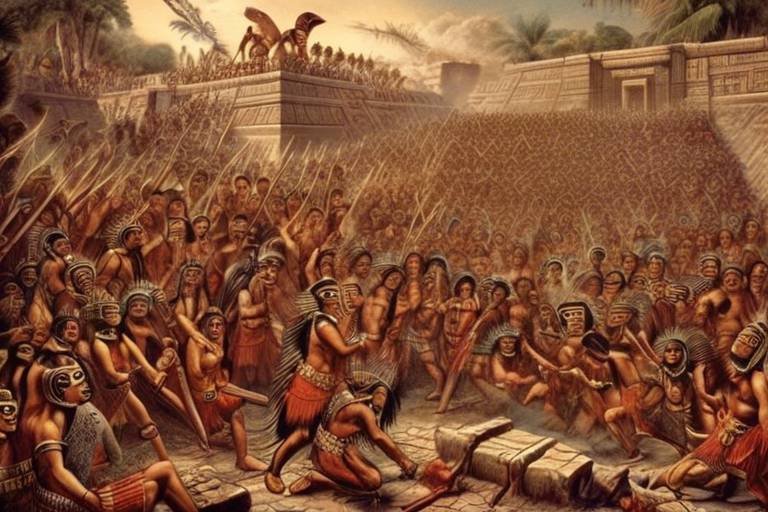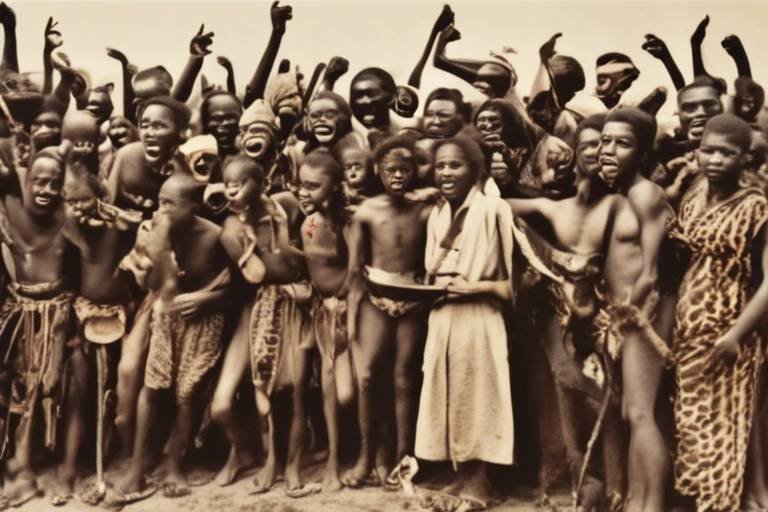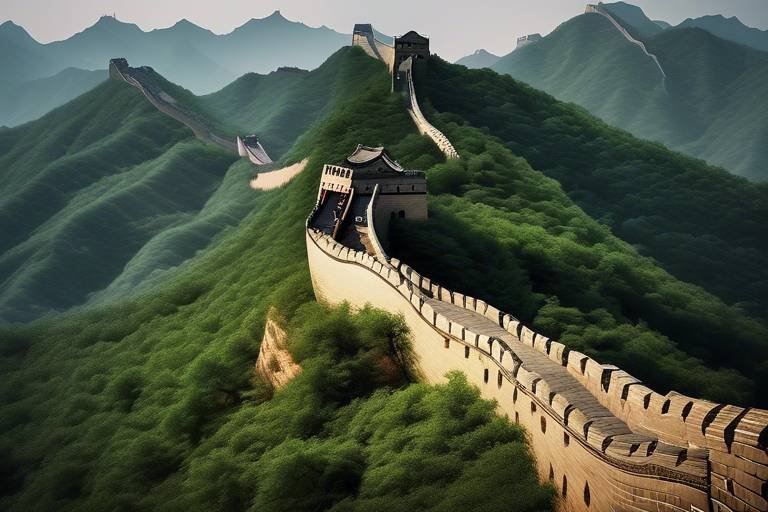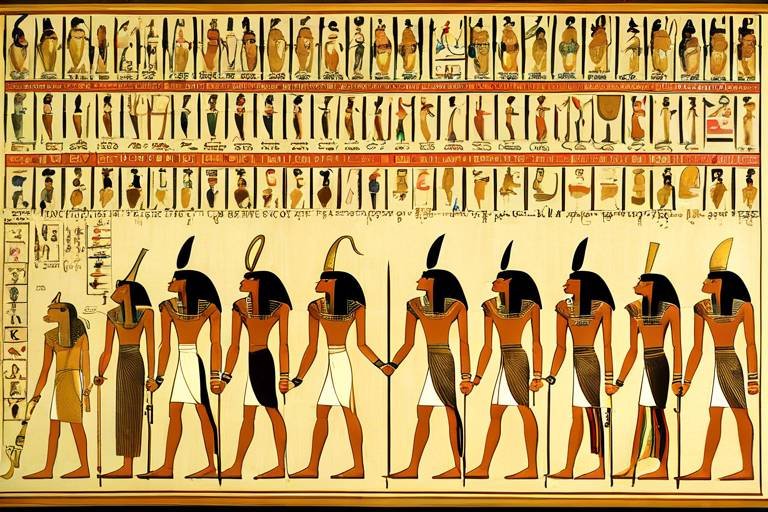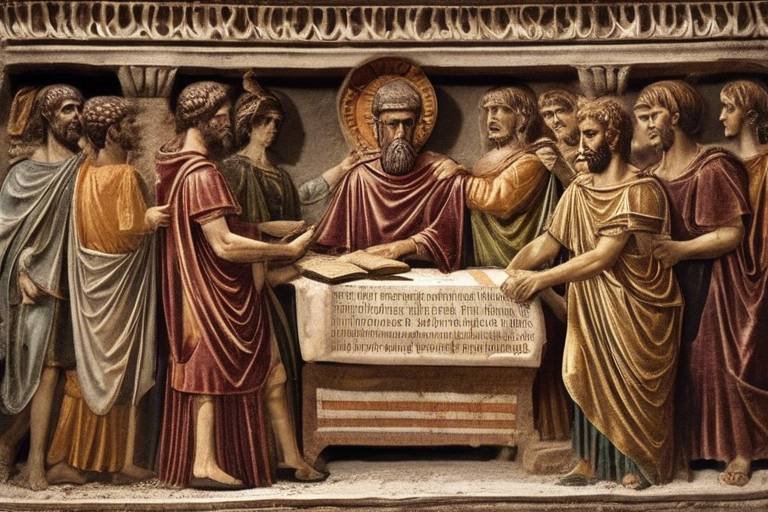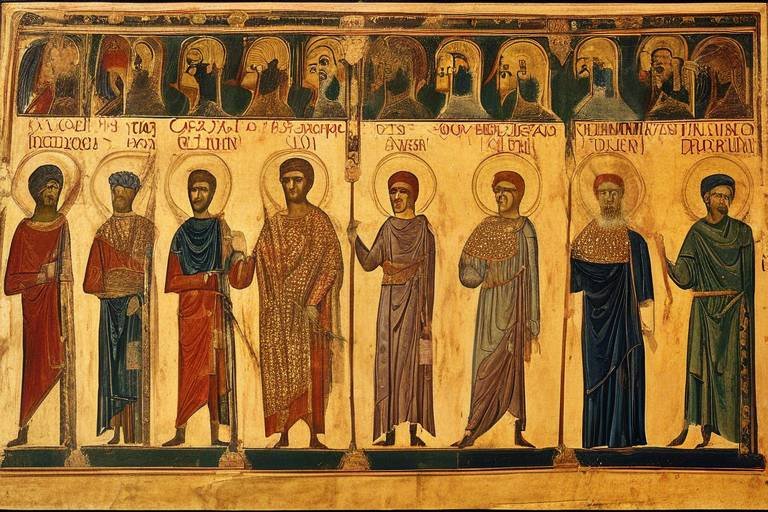The History of the Great Migration - African Americans in the North
During the early 20th century, a monumental shift took place in the United States, known as the Great Migration. This historic movement saw a significant number of African Americans leaving the Southern states and heading towards the North in search of new opportunities and a chance to escape the harsh realities of racial discrimination and segregation.
The Great Migration was not merely a physical relocation of people; it represented a quest for a better life, a journey towards hope and freedom. African Americans bravely embarked on this journey, leaving behind the familiar but oppressive conditions of the South, and venturing into the unknown territories of the North.
As they traveled northward, African Americans carried with them their culture, traditions, and resilience, enriching the fabric of the Northern cities they settled in. This mass movement of people reshaped the demographic landscape of urban centers, bringing about a wave of cultural influences and social changes that reverberated for generations to come.
One of the most remarkable outcomes of the Great Migration was the emergence of the Harlem Renaissance, a cultural and artistic explosion that took place in the vibrant neighborhood of Harlem, New York. Here, African American artists, writers, musicians, and intellectuals found a creative haven, giving birth to a renaissance of black culture that captivated the nation.
Moreover, the influx of African Americans from the South fueled the industrial growth and urbanization of Northern cities, providing a vital workforce for the expanding industries and contributing to the economic prosperity of the region. The labor market dynamics shifted, creating new opportunities and challenges for both migrants and the local population.
However, the journey was not without its hardships. African American migrants faced numerous obstacles along the way, from housing discrimination and limited job prospects to racial tensions and violent confrontations. The legacy of slavery and segregation cast a long shadow over their new lives in the North, perpetuating inequality and injustice.
Despite these challenges, the Great Migration left an indelible mark on the African American communities, shaping their identity and culture in profound ways. The legacy of this historic movement continues to resonate today, reminding us of the resilience and determination of those who dared to dream of a better future.

Causes of the Great Migration
Exploring the significant movement of African Americans from the South to the North in the early 20th century reveals a complex interplay of various factors that prompted this historic migration. The causes of the Great Migration were deeply rooted in the socio-economic and racial dynamics of the time, shaping the course of African American history in profound ways.
One of the primary drivers of the Great Migration was the quest for better economic opportunities. African Americans in the South faced limited job prospects and low wages due to the legacy of slavery and institutionalized racism. The allure of industrial jobs in the North, particularly in cities like Chicago, Detroit, and New York, offered the promise of higher incomes and a chance for economic advancement.
Another compelling factor that fueled the migration was the desire to escape the oppressive conditions of the Jim Crow laws in the Southern states. These discriminatory laws enforced racial segregation and denied African Americans basic civil rights, leading many to seek refuge in the more racially tolerant and diverse urban centers of the North.
Moreover, the search for better living conditions played a significant role in driving African Americans to migrate to the North. The overcrowded and impoverished conditions prevalent in many Southern communities pushed individuals and families to seek a better quality of life, including access to improved housing, education, and healthcare facilities.
The Great Migration was not merely a geographical relocation but a profound social and cultural phenomenon that reshaped the demographic landscape of the United States. By understanding the multifaceted causes behind this mass movement, we gain insight into the resilience and determination of African Americans striving for a brighter future amidst adversity.

Impact on Northern Cities
The Great Migration had a profound impact on the urban landscape of Northern cities, reshaping their demographics, culture, and economy. As African Americans moved in large numbers from the rural South to the industrial North, cities like Chicago, Detroit, and New York experienced significant transformations. The influx of migrants not only altered the racial composition of these urban centers but also brought new energy and vibrancy to their neighborhoods.
One of the most notable consequences of the Great Migration was the rise of the Harlem Renaissance in New York City. This cultural movement, centered in the Harlem neighborhood of Manhattan, saw a flourishing of African American art, music, literature, and intellectual thought. The creative output of prominent figures like Langston Hughes, Zora Neale Hurston, and Duke Ellington during this period left a lasting imprint on American culture.
Moreover, the migration of African Americans to Northern cities fueled industrial growth and urbanization. As factories and industries in the North expanded, there was a growing demand for labor, which many migrants filled. The influx of new workers not only boosted the economy but also contributed to the development of thriving urban communities.
However, alongside these positive developments, the Great Migration also brought about significant challenges for African American migrants. Discriminatory practices such as redlining and housing segregation confined many individuals to overcrowded and under-resourced neighborhoods. Limited job opportunities and racial tensions further exacerbated the difficulties faced by migrants trying to establish themselves in their new urban environments.
Additionally, the migration of African Americans to Northern cities often led to racial conflicts and violence. Tensions between the incoming migrants and the established white communities sometimes erupted into race riots, highlighting the deep-seated prejudices and inequalities that persisted in urban areas. These instances of violence underscored the social upheaval and struggle for equality that characterized the Great Migration.
In conclusion, the impact of the Great Migration on Northern cities was multifaceted, shaping the social, cultural, and economic fabric of these urban centers in profound ways. The legacy of this mass movement of African Americans continues to resonate in the rich tapestry of American history and the ongoing quest for social justice and equality.

Harlem Renaissance
The was a period of immense cultural and artistic growth within the African American community in Harlem, New York City, during the early 20th century. This era marked a significant turning point in the expression of African American identity through various art forms, including music, literature, and visual arts.
Harlem became a vibrant hub of creativity and intellectualism, attracting talented individuals from different parts of the country. The movement not only showcased the artistic prowess of African Americans but also challenged societal norms and stereotypes, paving the way for a more inclusive and diverse cultural landscape.
During the Harlem Renaissance, iconic figures such as Langston Hughes, Zora Neale Hurston, and Duke Ellington emerged, leaving a lasting impact on American culture. Their works reflected the experiences, struggles, and triumphs of the African American community, resonating with audiences across the nation.
Music played a pivotal role in the Harlem Renaissance, with the rise of jazz and blues becoming synonymous with the era. Jazz clubs and speakeasies became gathering places for artists and intellectuals, fostering a sense of community and camaraderie among African Americans.
Artistic expression flourished during this period, with writers penning powerful poems and novels that captured the essence of the African American experience. The Harlem Renaissance not only celebrated the richness of African American culture but also served as a platform for social commentary and activism.
Overall, the Harlem Renaissance was a transformative movement that not only reshaped the cultural landscape of America but also laid the foundation for future generations of artists and thinkers to continue challenging conventions and pushing boundaries.

Urbanization and Industrial Growth
Urbanization and Industrial Growth during the Great Migration played a pivotal role in reshaping the landscape of Northern cities. The influx of African Americans from the South fueled a rapid expansion of urban areas, transforming once small towns into bustling metropolises. As African Americans sought better economic opportunities and escape from the oppressive conditions of the Jim Crow South, they became a driving force behind the industrial growth of cities like Chicago, Detroit, and New York.
With the migration came a surge in labor supply, providing industries with a skilled workforce ready to contribute to the booming economy. African Americans found employment in factories, steel mills, and other industrial sectors, becoming essential to the production and development of the urban landscape. This shift towards industrialization not only boosted the economic prosperity of Northern cities but also paved the way for technological advancements and innovation.
The urbanization process brought about significant changes in the physical infrastructure of cities. Skyscrapers began to dot the skyline, reflecting the upward mobility and aspirations of the migrants who sought a better life in the North. Neighborhoods flourished with cultural diversity, as African American communities added their unique flavors to the social fabric of urban life. The bustling streets became a melting pot of traditions, languages, and experiences, creating a vibrant tapestry of city living.

Challenges Faced by Migrants
Exploring the significant movement of African Americans from the South to the North in the early 20th century, seeking better opportunities and fleeing racial discrimination and segregation.
Factors driving African Americans to leave the South, including economic opportunities, escape from Jim Crow laws, and the search for better living conditions.
The effects of the Great Migration on urban centers in the North, such as demographic shifts, cultural influences, and labor market changes.
The flourishing of African American culture, arts, and literature in Harlem during the early 20th century as a result of the Great Migration.
How the influx of African Americans from the South fueled urbanization and contributed to the industrial expansion of Northern cities.
During the Great Migration, African American migrants encountered numerous challenges that hindered their transition and integration into Northern cities. One of the major obstacles was housing discrimination, where many African Americans faced difficulties in finding suitable accommodation due to discriminatory practices like redlining. This discriminatory practice systematically limited the housing options available to African Americans, pushing them into segregated neighborhoods with limited resources and opportunities.
Additionally, racial tensions between the existing white residents and the incoming African American population often led to conflicts and violence. Race riots erupted in several Northern cities as a result of these tensions, further exacerbating the challenges faced by the migrants. Limited job opportunities also posed a significant challenge, as African Americans struggled to secure stable employment in the face of discrimination and competition in the labor market.
Redlining, a discriminatory practice by which banks and financial institutions refused to lend money or extend services to people in certain neighborhoods based on their racial or ethnic composition, perpetuated segregation and limited economic opportunities for African American migrants in Northern cities.
Instances of racial conflicts and violence erupted in Northern cities as tensions between African American migrants and white residents escalated. These incidents further highlighted the deep-rooted racial prejudices and challenges faced by African Americans seeking a better life in the North.
The lasting impact of the Great Migration on African American communities, culture, and identity in both the North and the South continues to shape the social landscape of the United States, reflecting the resilience and determination of those who sought a better future amidst adversity.
Stay tuned for answers to common questions about the Great Migration and its historical significance.

Redlining and Segregation
During the Great Migration, African American migrants faced significant challenges, with redlining and segregation being prominent issues that shaped their experiences in Northern cities. Redlining refers to the discriminatory practice of denying services or access to certain neighborhoods based on the racial or ethnic composition of the residents. This practice was prevalent in the North, where African Americans were often confined to specific areas through restrictive housing policies and lending practices.
Segregation further compounded the difficulties faced by African American migrants, as they encountered systemic barriers that limited their social and economic mobility. Segregated schools, neighborhoods, and public spaces reinforced racial divisions and perpetuated inequality within urban centers. The lack of access to quality housing, education, and employment opportunities due to segregation hindered the progress and prosperity of African American communities.
In addition to institutionalized discrimination, African American migrants also experienced overt acts of racism and violence in Northern cities. Racial tensions often boiled over into race riots and conflicts, fueled by resentment and hostility between African American newcomers and white residents. These outbreaks of violence further exacerbated the challenges faced by migrants, creating a volatile and hostile environment in which they had to navigate daily life.

Race Riots and Violence
Race riots and violence were unfortunate outcomes of the Great Migration, highlighting the deep-seated racial tensions and conflicts that existed in Northern cities. As African Americans moved in search of better opportunities, they often faced hostility and resistance from white residents, leading to violent clashes and unrest.
These race riots were fueled by a mix of economic competition, social inequalities, and long-standing prejudices. African American migrants, already marginalized and facing discrimination, found themselves in hostile environments where their presence was met with resistance and aggression.
Instances of violence erupted in cities like Chicago, Detroit, and Philadelphia, where African American communities were targeted, homes and businesses were destroyed, and lives were lost. The clashes between different racial groups exposed the underlying tensions and highlighted the challenges of integration and acceptance.
The aftermath of these race riots left scars on the affected communities, deepening the divide between racial groups and perpetuating stereotypes and animosities. The violence and unrest served as a stark reminder of the systemic racism and inequality that plagued American society, prompting calls for social change and justice.

Legacy of the Great Migration
After the waves of the Great Migration settled, its legacy continued to reverberate through the fabric of American society, leaving an indelible mark on the history and culture of both the North and the South. The mass movement of African Americans reshaped communities, identities, and opportunities, shaping the course of future generations.
One of the most profound legacies of the Great Migration was the transformation of urban landscapes in the North. As African Americans flocked to cities like Chicago, New York, and Detroit, they brought with them their traditions, music, and art, enriching the cultural tapestry of these bustling metropolises. The vibrant neighborhoods that emerged became hubs of creativity and resilience, fostering a sense of community and solidarity among migrants.
Moreover, the Great Migration played a pivotal role in the advancement of civil rights and social justice in America. The collective experiences of African Americans during their journey northward fueled the flames of resistance against systemic racism and discrimination. The struggles faced by migrants in their quest for equality laid the groundwork for the civil rights movement of the 1960s, leading to landmark legislative victories and societal shifts.
On a more personal level, the legacy of the Great Migration lives on in the stories and memories passed down through families and communities. The resilience and determination of those who braved the unknown in search of a better life continue to inspire future generations to persevere in the face of adversity. The values of hard work, perseverance, and community forged during this tumultuous period remain as guiding lights for many African American families today.
Furthermore, the cultural impact of the Great Migration can be seen in the enduring influence of African American art, music, and literature on American society. The Harlem Renaissance, a cultural explosion that emerged in the 1920s, was a direct result of the migration of talented individuals from the South to the artistic haven of Harlem. This period of artistic renaissance produced iconic works that continue to resonate with audiences worldwide, showcasing the creativity and resilience of African American artists.
Frequently Asked Questions
- What was the main reason behind the Great Migration?
The Great Migration was primarily driven by African Americans seeking better economic opportunities, escaping the harsh realities of Jim Crow laws in the South, and searching for improved living conditions in the North.
- How did the Great Migration impact the urban centers in the North?
The Great Migration had significant effects on Northern cities, leading to demographic shifts, cultural influences, and changes in the labor market as African Americans moved in large numbers, reshaping the social and economic landscape.
- What was the Harlem Renaissance and how was it related to the Great Migration?
The Harlem Renaissance was a cultural and artistic movement that flourished in Harlem during the early 20th century, fueled by the influx of African Americans during the Great Migration. It showcased the rich talents and creativity of African American artists, writers, and musicians.
- What were some of the challenges faced by African American migrants during the Great Migration?
African American migrants encountered various obstacles, including housing discrimination, racial tensions, and limited job opportunities in the North, leading to struggles for social and economic equality in their new environments.
- What is the lasting legacy of the Great Migration on African American communities?
The Great Migration left a profound impact on African American communities, shaping their culture, identity, and experiences in both the North and the South, influencing generations to come and contributing to the ongoing fight for civil rights and social justice.



